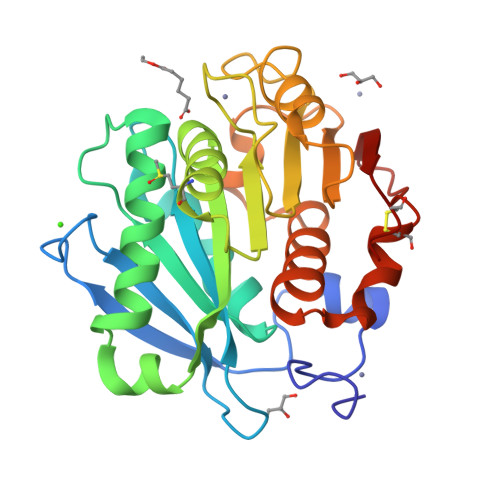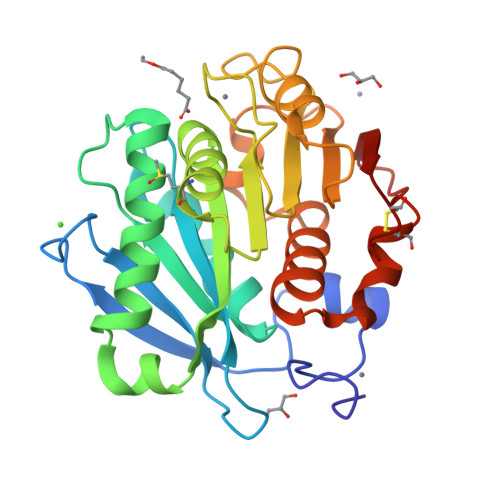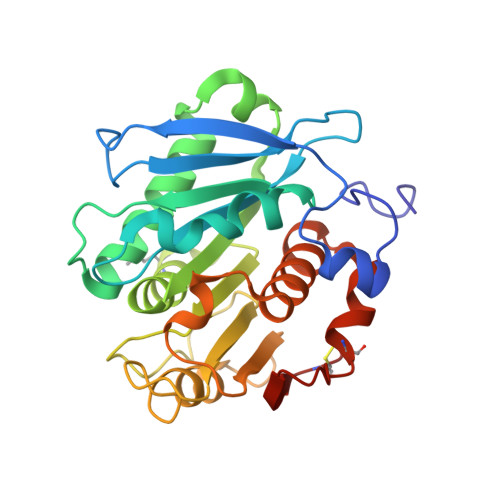Structural Dynamics of the PET-Degrading Cutinase-like Enzyme from Saccharomonospora viridis AHK190 in Substrate-Bound States Elucidates the Ca2+-Driven Catalytic Cycle.
Numoto, N., Kamiya, N., Bekker, G.J., Yamagami, Y., Inaba, S., Ishii, K., Uchiyama, S., Kawai, F., Ito, N., Oda, M.(2018) Biochemistry 57: 5289-5300
- PubMed: 30110540
- DOI: https://doi.org/10.1021/acs.biochem.8b00624
- Primary Citation of Related Structures:
5ZNO, 5ZRQ, 5ZRR, 5ZRS - PubMed Abstract:
A cutinase-type polyesterase from Saccharomonospora viridis AHK190 (Cut190) has been shown to degrade the inner block of polyethylene terephthalate. A unique feature of Cut190 is that its function and stability are regulated by Ca 2+ binding. Our previous crystal structure analysis of Cut190S226P showed that one Ca 2+ binds to the enzyme, which induces large conformational changes in several loop regions to stabilize an open conformation [Miyakawa, T., et al. (2015) Appl. Microbiol. Biotechnol. 99, 4297]. In this study, to analyze the substrate recognition mechanism of Cut190, we determined the crystal structure of the inactive form of a Cut190 mutant, Cut190*S176A, in complex with calcium ions and/or substrates. We found that three calcium ions bind to Cut190*S176A, which is supported by analysis using native mass spectrometry experiments and 3D Reference Interaction Site Model calculations. The complex structures with the two substrates, monoethyl succinate and monoethyl adipate (engaged and open forms), presumably correspond to the pre- and post-reaction states, as the ester bond is close to the active site and pointing outward from the active site, respectively, for the two complexes. Ca 2+ binding induces the pocket to open, enabling the substrate to access the pocket more easily. Molecular dynamics simulations suggest that a post-reaction state in the engaged form presumably exists between the experimentally observed forms, indicating that the substrate would be cleaved in the engaged form and then requires the enzyme to change to the open form to release the product, a process that Ca 2+ can greatly accelerate.
Organizational Affiliation:
Medical Research Institute , Tokyo Medical and Dental University , 1-5-45 Yushima , Bunkyo-ku, Tokyo 113-8510 , Japan.





















